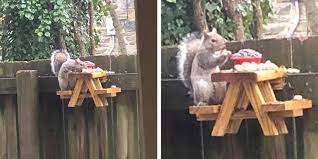Here at Kingdoms, we love hummingbirds in all shapes and sizes, and there certainly are a crazy number of unique types.
Here is one that you have to see to believe it, meet the sword-billed hummingbird.

A hummingbird’s beak ranges in length depending on the species.
You can go from a medium-sized bill like a starthroat hummingbird and go as far as the sword-billed hummingbird, whose beak is longer than its whole body!
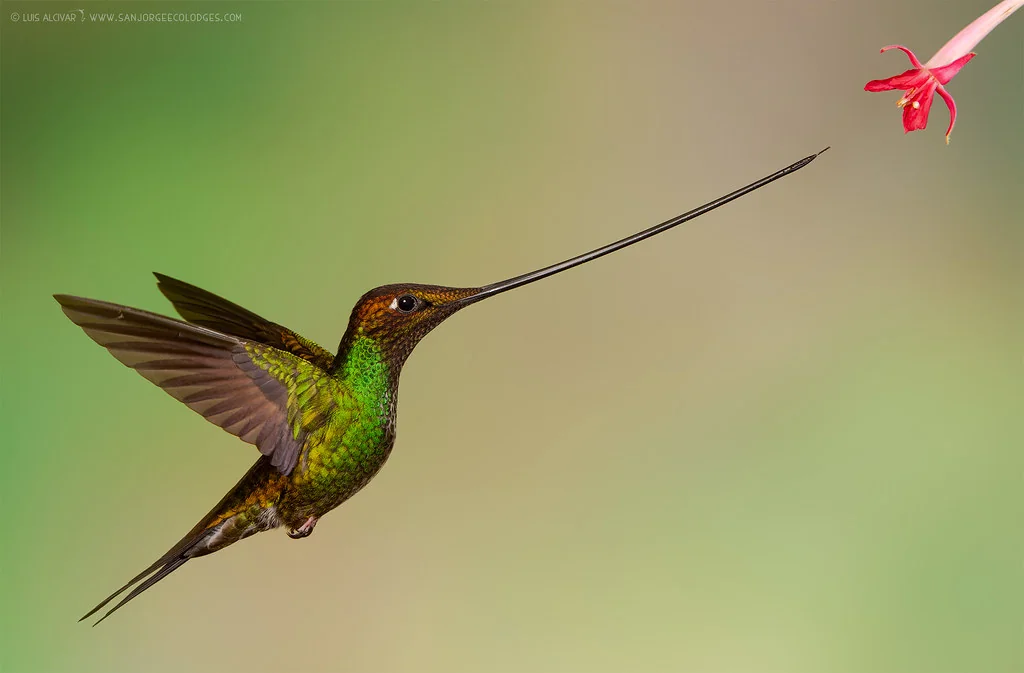
These unique birds are native to South America, specifically the Andean chain stretching from Bolivia to Venezuela.
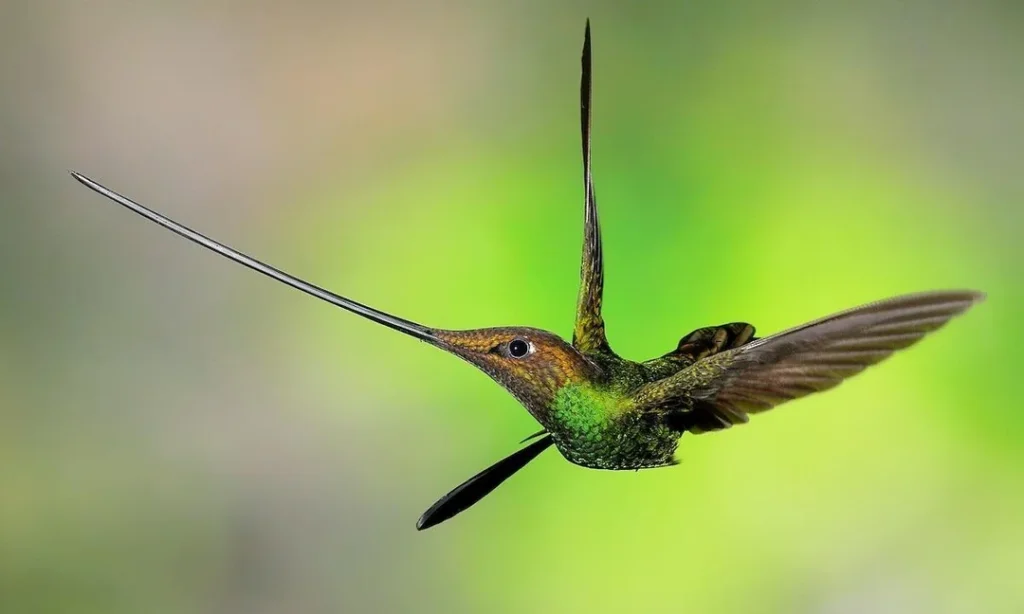
Looking at it, the bird doesn’t look right! Its tiny body is attached to a 4-inch long beak that’s longer than its whole body and tail.

Youngsters start off with a normal-sized beak, but before they know it, the beak grows faster than they do, with an elongated tongue to match.
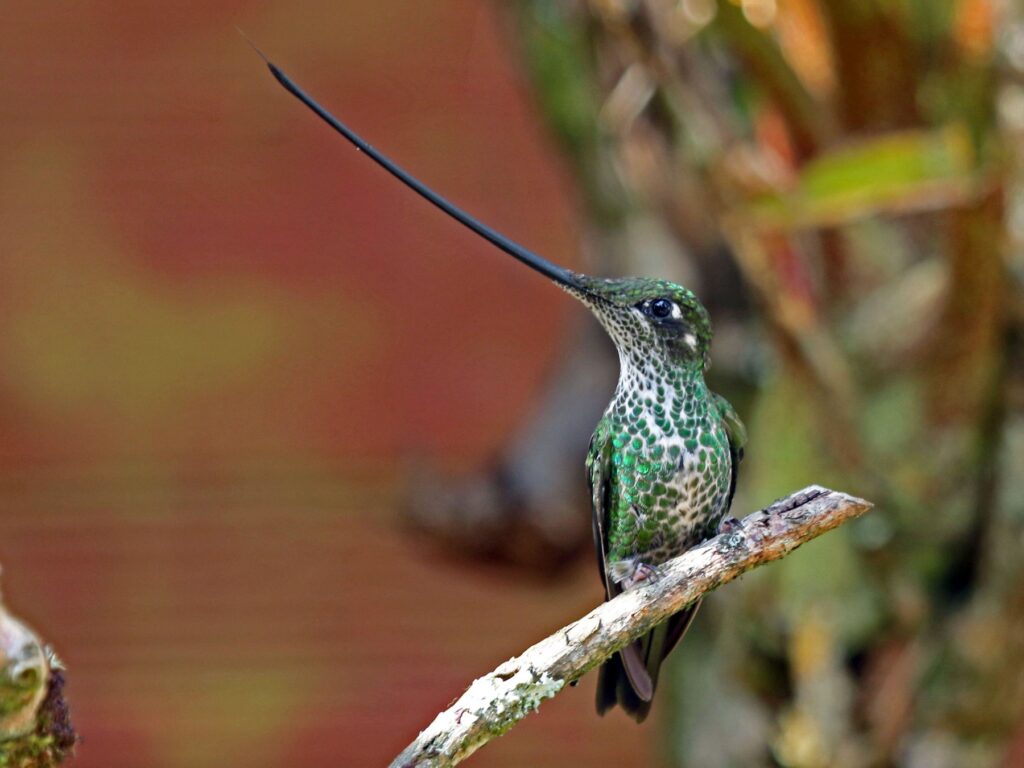
Like most birds, you can distinguish the male and female, both are an exciting iridescent green, but females have a white-spotted throat.
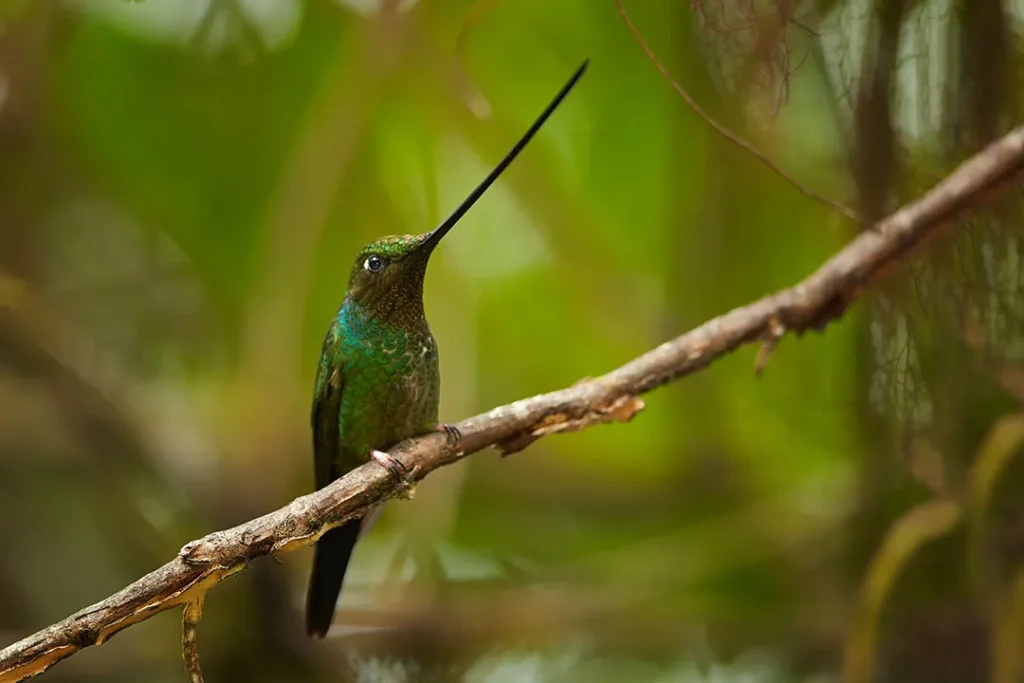
Their sword-bill does slow them down as they are not the same speed as average hummingbirds who can be a literal blur when flying by.
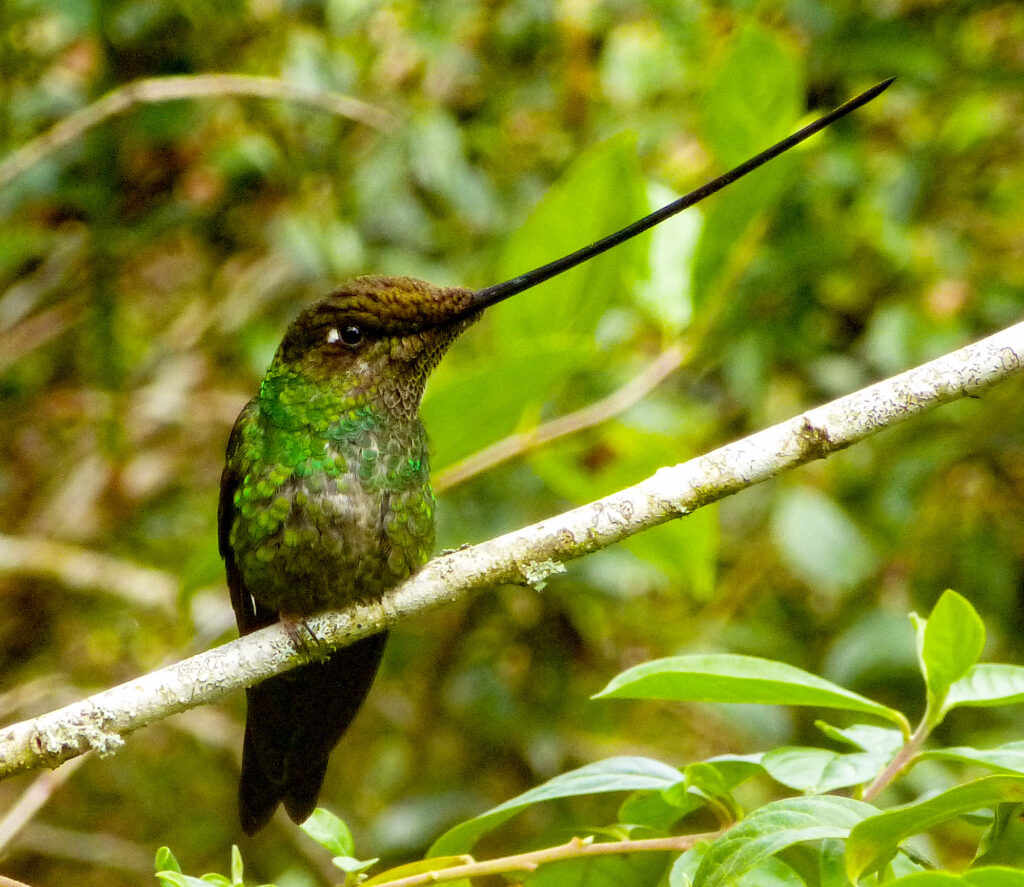
Like other hummingbirds, they are sugar junkies and spend their days feeding on plant nectar.
The huge beak is an evolutionary design with the purpose of reaching the inside of the trumpet-shaped blooms you find on certain plants.
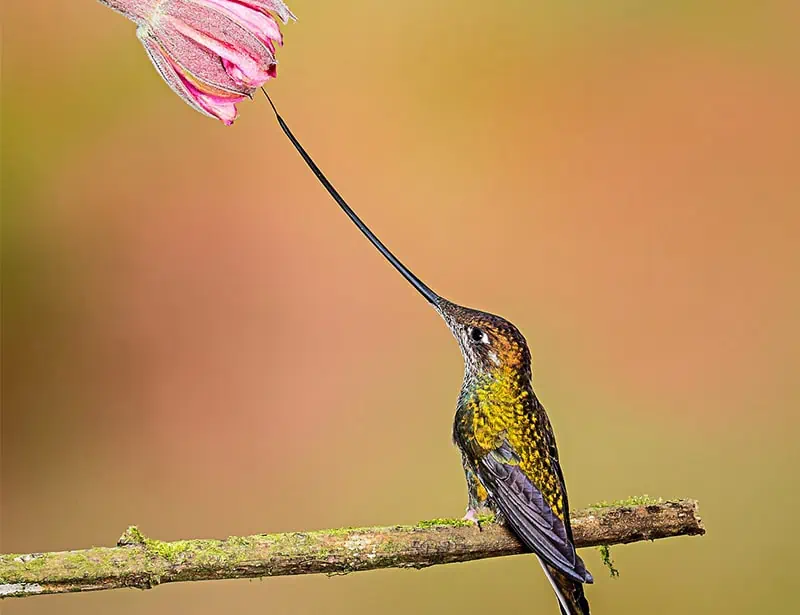
The sword bills hummingbird feeds on, as well as nectar, small invertebrates. Its favorite are spiders which the can probe out of little holes with their bills.
Interestingly, the bottom of the beak has a hinge that bends which enables the bird to catch more food when there are groups/swarms of insects.



